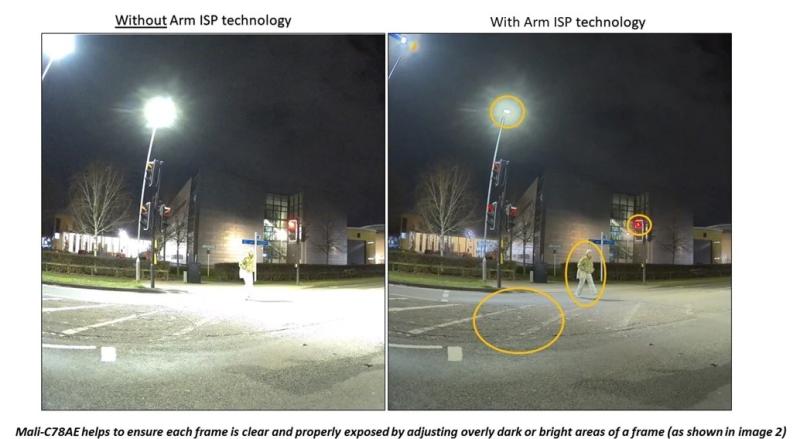Arm announced new automotive image signal processor (ISP) technology for use in driver assist and automation tech that is increasingly built into standard vehicle models, not just premium ones.
The new Mali-C78AE ISP from Arm is designed to work alongside a Cortex CPU and Mali GPU to optimize vision systems for Advanced Driver Assist Systems (ADAS) for safety applications such as collision avoidance, lane departure warnings and automated emergency braking.
Cameras positioned around a car increasingly enable such features. As the number of vehicle cameras increases, along with higher resolution and other features, more compute power is needed to translate the image data safely and efficiently, Arm Vice President of automotive Chet Babla explained in a blog on Friday.
Mobileye is the first company to license the new ISP, alongside a Mali GPU, and will use them for its next-generation EyeQ Ultra technology. On Thursday, Mobileye said during an Intel Investor Day presentation that is currently developing ADAS vehicles with 11 cameras per vehicle, in addition to radar and lidar sensors.
Arm described how the new ISP helps for both human and machine vision applications. For example, a surround view system seen by a driver uses cameras around the vehicle to help a driver make decisions while parking. By contrast, adaptive cruise control uses camera data to interpret the environment and make decisions without the driver about whether to apply the throttle or brake. The new ISP is designed to help with both human and machine vision safety, processing data from up to four real-time or 16 virtual cameras.
“A fault or failure in operation of an ADAS system could be dangerous, threatening the wellbeing of the driver, passengers or other road users,” Babla said.
The Mali processor aims to prevent or detect faults in a single camera frame if it is incorrectly processed. It features 380 fault detection circuits that work continuously in self-test mode to detect sensor and other hardware faults with connected cameras. It uses noise reduction technology to ensure each frame is clear and properly exposed by adjusting dark or bright areas of a frame.

Also, Mali-C78AE enables camera sensors to be dual purpose for both machine vision and human vision. It downscales and color translates the sensors optimized for machine vision to create images for the human eye. Its throughput is rated at 1.2 Gigapixels per second offering a 30% performance improvement over its predecessor, Arm said in a product brief.
RELATED: Ready in 2024: Benteler, Beep and Mobileye to launch EV shuttles in U.S.